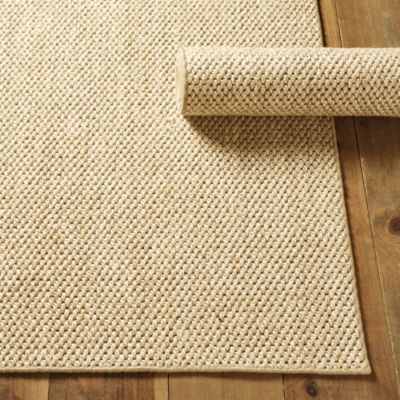Sisal carpets are a beloved choice among homeowners and interior designers alike — not only for their natural beauty and earthy texture but also for their eco-friendliness. Woven from the tough fibers of the Agave sisalana plant, sisal rugs bring warmth, sustainability, and timeless appeal to any living space. However, like any natural fiber, sisal requires proper care to retain its appearance and last for years.
In this comprehensive guide, we break down everything you need to know about sisal carpet care, from everyday maintenance to tackling tough stains — so your rug looks as elegant as the day it was installed.
Why Proper Sisal Care Matters
Sisal is a natural, plant-based fiber, meaning it doesn’t react the same way to spills and wear as synthetic carpets do. It’s absorbent, doesn’t like excess moisture, and is sensitive to certain cleaning products. But with just a few mindful steps, you can easily preserve the quality and appearance of your sisal carpet.
Daily & Weekly Maintenance Tips
Keeping your sisal carpet clean starts with regular maintenance:
Vacuuming
- Frequency: Vacuum 2–3 times a week or more often in high-traffic areas.
- Tip: Use a strong-suction vacuum without a beater bar to avoid damaging the fiber.
- Benefit: Sisal’s tight weave prevents dirt from sinking deep, so vacuuming removes most particles on the surface.
Avoid Shaking or Beating
Unlike small synthetic rugs, sisal carpets shouldn’t be beaten or shaken vigorously, as this can damage the fiber structure. Vacuuming is sufficient for regular upkeep.
Preventative Measures
To prolong the life of your sisal carpet, it’s essential to be proactive:
Use Rug Pads
A rug pad underneath your sisal carpet helps prevent slippage, reduces wear, and provides extra cushioning. It also promotes air circulation under the rug, reducing moisture build-up.
Rotate Periodically
Rotate your sisal rug every 3–6 months to ensure even wear, especially in rooms where one area sees more foot traffic than others.
Keep Away from Moisture
Sisal doesn’t tolerate moisture well. It absorbs liquid quickly, which can cause staining, warping, or mold. Avoid placing sisal rugs in damp environments such as:
- Bathrooms
- Laundry rooms
- Basements
Instead, reserve them for dry areas like living rooms, hallways, and bedrooms.
Spot Cleaning Spills: Act Fast
Blot, Don’t Rub
When spills happen, blot immediately using a clean, dry cloth or paper towel. Never rub, as it pushes the liquid deeper into the fibers and spreads the stain.
Dry Cleaning Compound
For minor spills, a dry-cleaning powder specifically designed for natural fiber carpets can be applied. Sprinkle the compound on the affected area, let it sit, then vacuum thoroughly.
Use a Mild Vinegar Solution
For organic stains (like coffee or juice), a light vinegar and water mix (1:1 ratio) can be used. Lightly dampen a cloth with the solution and gently blot the stain. Follow with a dry towel to remove moisture.
Caution: Always do a patch test in a hidden area first to ensure no discoloration occurs.
Deep Cleaning: Proceed with Caution
Unlike synthetic rugs, sisal should never be steam cleaned or shampooed with water-based solutions. Excess water can:
- Weaken fibers
- Cause shrinkage
- Lead to mildew growth
For thorough cleaning:
- Opt for professional dry carpet cleaning services that specialize in natural fiber rugs.
- Alternatively, use a dry extraction carpet cleaner with sisal-safe solutions.
Managing Stains and Odors
If your sisal rug begins to trap odors, sprinkle baking soda lightly over the surface. Let it sit overnight, then vacuum thoroughly. Baking soda absorbs odors without affecting the natural fiber.
For stubborn stains like oil or wine:
- Use a dry-cleaning solvent
- Blot with a white cloth and follow up with a dry towel.
- Avoid using soap-based cleaners or bleach.
Protecting Sisal from Sunlight and Furniture
Sun Fading
Sisal carpets may fade over time when exposed to direct sunlight. To prevent this:
- Use window treatments or blinds.
- Occasionally rotate the carpet to balance the color fading.
Furniture Dents
Heavy furniture can flatten sisal fibers. Place felt pads under furniture legs to distribute pressure and prevent dents. Rotating furniture placement occasionally also helps.
Storing Sisal Rugs
If you’re planning to store your sisal rug:
- Make sure it is clean and completely dry.
- Roll, don’t fold, to avoid creases.
- Store in a cool, dry area in a breathable bag or cotton sheet — never in plastic, which traps moisture.
Conclusion: Natural Beauty Needs Natural Care
Sisal carpets are a beautiful and eco-conscious choice for your home. Their texture, strength, and sustainable appeal make them a favorite in both modern and rustic interiors. However, they thrive with careful, consistent maintenance — especially when it comes to moisture and stains.
With the right techniques, your sisal rug can remain a natural showpiece in your home for many years. Think of sisal care not as a chore, but as an investment in both aesthetics and environmental responsibility.
Looking for High-Quality Sisal Carpets?
Choose a trusted supplier who understands natural fiber Sisal Carpet dubai flooring and offers custom sizing, eco-friendly backing, and expert advice on care and maintenance. Whether you’re in Dubai, Abu Dhabi, or beyond, a premium sisal carpet brings your space to life — naturally.

